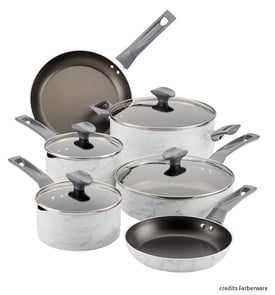The International Home and Housewares Show was a wonderful opportunity to discover what’s new and exciting in US home and housewares design. With more than 2,200 exhibitors and 60,000 attendees, it was the perfect environment. F.B.M. was pleased to actively attend this show, and we learned much about up-to-the-minute American cookware trends during our time there.
Single Person Household Numbers Up, Boomers Spending Most Money
In the US, the number of single-person households has jumped by 28 percent (2018). The number of renter households has also increased; the majority of these households (two-thirds) have been attributed to the higher number of single-family homes, the trend toward fewer and fewer families with children continues. (The American Living Survey, Design Research)
According to the MacroMonitor Market Trends Newsletter (April 2018), Millennial's became the largest cohort of US households; they are having children and therefore starting to buy houses. On average, across generations, spending per year per household is increasing. It grew by a rate of 16 percent in 2017 over 2013 figures.
In terms of spending power, Baby Boomers win hands down over other groups in the US. This group of 55-73 year-olds accounts for 101 million people (31 percent of the population). They also spend more money due to the sheer size of the group, their higher income levels and larger family sizes.
These changes in population demographics affect cookware trends in the US. For example, the number of marriages being performed in the US is falling. However, weddings remain a major occasion when consumers are likely to spend on homeware. The average amount spent on homeware as a wedding present is $150-$200, more than what they would spend on themselves.
American Cookware Trends from the International Home and Housewares Show
While attending the show, we took note of the following trends that we felt were most noteworthy and shareable with readers.
High-level Products in Demand
Consumers are not being swayed by the allure of inexpensive brands offering cheap products. They are prepared to spend time looking for prestige brands that will prove to be more durable and a better long-term investment.
Classic Designs Popular with Buyers
In kitchen designs, both Baby Boomers and Generation Y buyers are drawn toward classic looks. However, each generation has different ideas about what “classic” means to them. For the Baby Boomers, it’s important that their kitchen environment have a warm, cozy feel that is relaxing and welcoming. Generation Y consumers are seeking a more refined, rich-looking space, often choosing colors in white, beige or grey tones to create a luxurious feel.
Color and Texture Added with Accessories
Rather than putting money into colorful cabinets or appliances, we took note at the International Home and Housewares Show conferences that consumers are using accessories and details to add their own sense of style. This is the place where they are gravitating toward wood and stone effects for handles. Quartz is, without a doubt, the fastest growing countertop material, guiding the increased popularity of accessories in granite, marble and stone. Consumers are also being drawn to metallic effects, such as gold, silver and copper handles. Black and copper is a great and very popular combination.
Functionality an Important Consideration
With more people living in rented homes, space often comes at a premium. Consumers who want to make the most of available storage are especially interested in solutions that are stackable or which have other space-saving features built into the product.
It’s a fact of American life that spaces are becoming smaller, but what consumers need the spaces to do is only growing larger. This situation is what drives a number of buying decisions for modern consumers.




